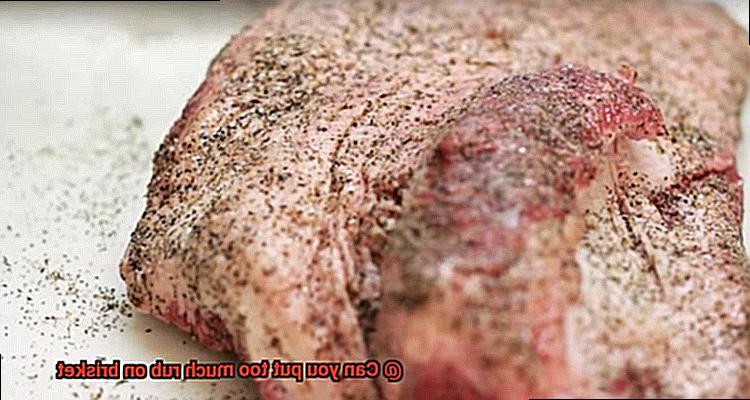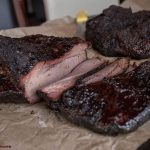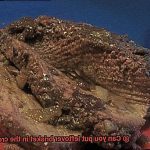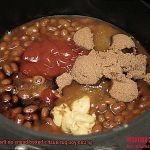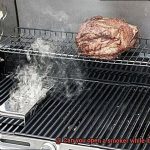As a self-proclaimed barbecue aficionado, I know that the perfect brisket is like a golden ticket to Willy Wonka’s chocolate factory. It’s rare, elusive, and highly sought after. But when it comes to seasoning that brisket, one question often arises: Can you put too much rub on brisket?
Let’s be real here – we all love a good rub on our meat. It’s that magical blend of spices that can transform a plain Jane piece of meat into a mouth-watering masterpiece. However, sometimes in our eagerness to season our brisket, we can go overboard with the rub. The end result? A flavor explosion that overpowers the delicate taste of the meat and leaves your taste buds feeling like they’ve been hit by a freight train.
That’s why it’s crucial to find the right balance of seasoning for your brisket. Too much rub can lead to bitterness and effectively ruin all your hard work in creating a delicious brisket. In this blog post, we’ll delve into the nitty-gritty details of getting the perfect amount of seasoning on your brisket to achieve that ideal harmony of flavors.
We’ll also explore what happens when you put too much rub on brisket and provide you with some handy tips and tricks to avoid making this rookie mistake. So if you’re ready to take your brisket game up a notch or two (or ten), grab yourself a cold one and settle in for some juicy insider knowledge on how to get the perfect rub for your brisket.
Contents
How Much Rub Should You Use?
Before you fire up your smoker, it’s important to know how much rub to use. The right amount of rub will create a mouth-watering crust while keeping your brisket juicy and flavorful. Here are some essential tips to help you get the perfect balance.
Firstly, remember that applying the rub evenly on all sides of the brisket is key. This ensures that every bite has a consistent flavor. As a general rule, use one tablespoon of rub per pound of meat. So, if you have a 10-pound brisket, aim for approximately 10 tablespoons of rub.
But don’t forget about the salt content in your rub. Too much salt can make your brisket overly salty and gritty in texture. To avoid this, try using a rub with less salt or use less rub overall.
Cooking method also plays a significant role in how much rub to use. If you’re planning on smoking your brisket for hours, a heavier coating of rub may be necessary as the flavors will mellow out over time. However, if you’re grilling your brisket quickly, use a lighter coating of rub so that the flavors don’t overpower the meat.
Lastly, it’s important to find the right balance between flavor and texture. Using too much rub can result in an overwhelming taste while using too little can be bland. By following these guidelines and adjusting according to personal preference, you’ll be able to achieve a perfectly balanced and delicious brisket every time.
The Consequences of Using Too Much Rub
While rubs can undoubtedly enhance the flavor of your meat, it is essential to understand that using too much rub can have disastrous consequences.
One of the most significant consequences of using too much rub is an unbalanced flavor. A generous amount of rub can mask the natural taste of the meat and leave a bitter or salty aftertaste. Instead of enhancing the flavor, an excessive amount of rub can overpower it, making it difficult to enjoy the natural taste of the brisket.
However, an unbalanced flavor isn’t the only issue with using too much rub. It can also lead to a dry and gritty texture that is tough to chew. Rubs contain ingredients like salt and sugar, which can draw out moisture from the meat if used in excess. This means that instead of creating a flavorful crust, you may end up with a tough and dry mess that’s hard to enjoy.
Appearance is another factor to consider when using rubs on your brisket. A thick layer of rub can create an unappetizing crust on the surface of the meat. This can ruin the visual appeal of your dish, making it less enjoyable for you and your guests.
To avoid these consequences, use an appropriate amount of rub that enhances the natural flavor of the meat without overpowering it. Consider adjusting the ingredients in your rub to avoid dryness or grittiness. Remember, balance is key when it comes to adding flavor to your brisket.
Tips for Applying the Right Amount of Rub
Then, it’s essential to apply the right amount of rub to achieve the perfect balance of flavors. Here are five tips to help you apply the right amount of rub and make your brisket the star at the dinner table.
Start with a clean slate
Before applying the rub, make sure that your brisket is clean and dry. Any moisture or debris on the surface of the meat can affect how the rub adheres. Take a few minutes to pat it dry with paper towels and remove any excess fat.
Use a light hand
When applying the rub, use a light hand and apply it evenly across all sides of the brisket. Resist the temptation to pile on too much rub, as it can result in a caked-on layer that doesn’t penetrate the meat. Instead, start with a light coating and gradually build up the layers of rub until you achieve the desired taste.
Consider the salt content
Salt is a significant ingredient in many rubs because it tenderizes and flavors the meat. However, too much salt can overpower other flavors and make your brisket too salty. Therefore, be mindful of how much salt is in your rub and adjust accordingly.
Taste as you go
As you’re applying the rub, taste a small sample of meat to get a sense of how it’s coming along. This will help you adjust if necessary before moving on to cooking. Remember that you can always add more seasoning later, but it’s hard to take away once applied.
Let it rest
After applying the rub, let your brisket rest for at least 30 minutes before cooking. This allows time for the flavors to penetrate your meat and avoid falling off during cooking. It’s also an excellent opportunity to let your brisket come to room temperature before placing it into the smoker.
Different Types of Brisket Rubs
Brisket is a beloved meat dish that can be elevated to new heights with the right rub. There are countless variations and combinations of brisket rubs, each with its own unique flavor profile. In this article, we will delve into five sub-sections of brisket rubs and their uses.
Classic Texas-style Rubs
When it comes to brisket rubs, a classic Texas-style rub is a go-to for many. It is a simple combination of coarse salt, black pepper, garlic powder, and paprika. This type of rub is known for its bold, smoky flavor that enhances the natural taste of the beef. The key to using this rub is to apply it sparingly and evenly so that it does not overpower the meat’s flavor.
Sweet and Savory Rubs
For those who prefer a little sweetness in their meat, a sweet and savory rub is perfect. These rubs often contain brown sugar, cinnamon, cumin, and chili powder. They balance the sweetness with a savory kick and can transform a regular brisket into something extraordinary.
Spicy Rubs
If you are a fan of spicy food, then a spicy rub might be your choice. A good spicy rub includes cayenne pepper, chili powder, and other hot spices. The key is to balance the spice so that it does not overpower the dish’s overall flavor.
Specialty Rubs
Specialty rubs cater to specific tastes and can add unique flavors to your brisket. For example, coffee rubs provide a rich, unique flavor while citrus-based rubs add brightness and tanginess to the meat. Just remember to use these rubs in moderation so that they do not overpower the dish’s natural taste.
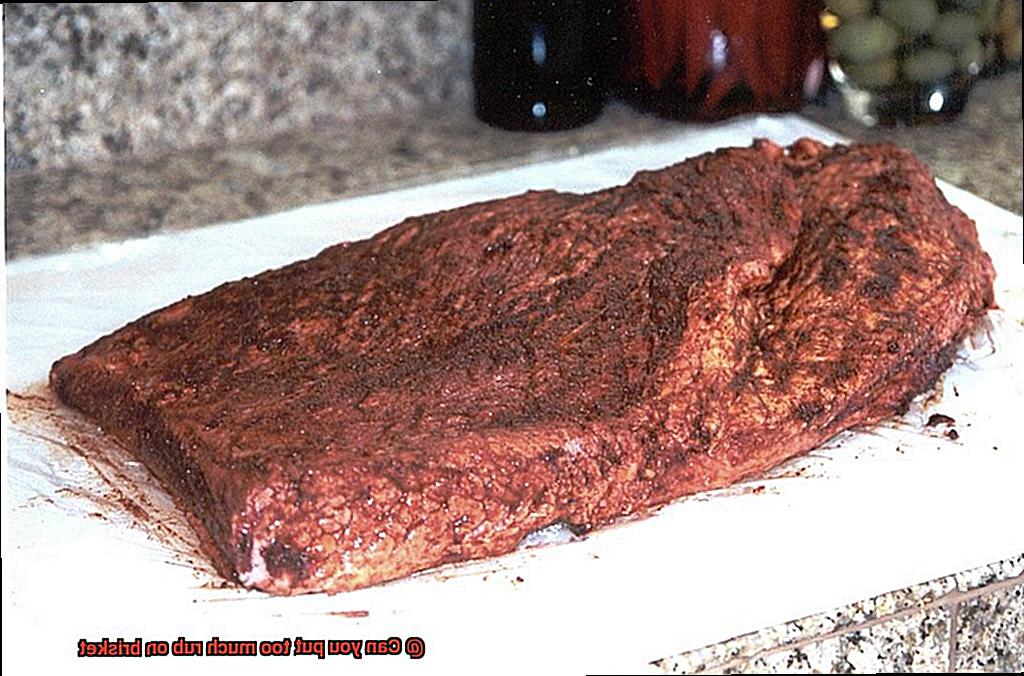
Dry Rubs, Wet Rubs, and Marinades
Dry rubs are a combination of dry spices and herbs that are applied to the surface of the meat. Wet rubs, also known as paste rubs, include a liquid component such as olive oil or Worcestershire sauce. They are applied to the surface of the meat and left to marinate for a few hours. Marinades take longer and involve soaking the meat in a mixture of spices, herbs, and liquids overnight. Each method adds moisture and flavor to meat, so choose the one that suits your taste buds.
Benefits of Using the Right Amount of Rub
Look no further than the benefits of using the right amount of rub. As a BBQ expert, I can attest that a good rub is essential for elevating your meat to the next level.
A rub is a flavorful mixture of spices, herbs, and sometimes sugar used to enhance the natural flavors of your meat. However, finding the perfect balance between your rub and brisket is crucial. Too little rub results in a lackluster meal, while too much can overpower your meat and leave a salty or spicy taste in your mouth.
But wait, there’s more. Did you know that using the right amount of rub can also tenderize your meat? Many rubs contain ingredients like salt or papain that break down tough muscle fibers, resulting in a more enjoyable eating experience and a more tender cut of meat.
And let’s not forget about that mouthwatering crust on the outside of your brisket. This flavorful crust, also known as bark, is created by the combination of spices, herbs, and sugar reacting with the heat from your grill or smoker. Not only does it add flavor, but it also seals in moisture, keeping your meat juicy.
Common Mistakes to Avoid When Applying Rubs
With any culinary technique, there are common mistakes that can ruin the taste and texture of your meat. To ensure that your brisket is flavorful and succulent every time you grill it, let’s dive into the common mistakes to avoid when applying rubs.
Firstly, resist the temptation to overload your brisket with rub. While it may seem like more is better, too much rub can actually mask the natural flavors of the meat and create an unappetizing texture if it forms a crust on top. Instead, use a light hand when applying the rub and trust that a little goes a long way.
Secondly, make sure you apply the rub evenly. Uneven distribution of rub can result in an inconsistent flavor profile. To prevent this, use your hands or a brush to distribute the rub evenly over every inch of the meat.
Thirdly, don’t go overboard with salt. Salt is an essential ingredient in any rub, but too much can leave your brisket tasting like a salt lick. Be sure to taste your rub before applying it and adjust the seasoning if necessary.
Lastly, don’t forget to let your brisket rest after applying the rub. This allows the flavors to penetrate the meat and creates a more even distribution of flavor. It also helps to prevent the rub from falling off during cooking.
To summarize, here are some key points to remember when applying rubs to brisket:
- Use a light hand when applying the rub
- Apply the rub evenly over every inch of the meat
- Taste your rub before applying it and adjust seasoning as necessary
- Let your brisket rest after applying the rub
How to Create Your Own Custom Brisket Rub
With a few simple ingredients and some experimentation, you can create a rub that perfectly complements the meat without overpowering it. Here are five steps to creating your own custom brisket rub:
Start with Salt and Sugar
A good rub needs a solid foundation of salt and sugar. These ingredients help to tenderize the meat and create a crust on the outside. Use a 2:1 ratio of salt to sugar, and adjust as needed based on personal preference.
Add in Spices and Flavors
Once you have your base, it’s time to add in other spices and flavors. This is where you can get creative – try adding in black pepper, paprika, garlic powder, onion powder, cumin, or chili powder. You can also add a touch of sweetness with brown sugar or honey. Remember to taste test along the way to ensure the flavors are balanced.
Apply Evenly
When it’s time to apply the rub, make sure to cover all sides of the meat evenly. Be careful not to use too much – a little goes a long way. Too much rub can actually result in a bitter taste.
Use the Right Amount
As a general rule of thumb, aim for 1-2 tablespoons of rub per pound of meat. Thicker cuts may require more rub than thinner cuts to ensure even seasoning.
The Best Store-Bought Brisket Rubs
When it comes to seasoning a brisket, finding the right balance of rub is crucial. Too little can leave the meat bland, while too much can overpower the natural flavors and ruin the dish altogether. Fortunately, store-bought brisket rubs offer a convenient solution for those who want to avoid these pitfalls.
With so many options on the market, choosing the best store-bought brisket rub can be overwhelming. But fear not. We’ve done the research and found some standout favorites. Bad Byron’s Butt Rub is a top pick among grillmasters for its savory blend of spices that add depth and flavor to any cut of meat, including brisket. Traeger Grills Beef Rub is another great option with a unique blend of garlic, chili pepper, and paprika that gives the meat a smoky flavor. And Kosmos Q Texas Beef Rub is a classic blend of salt, pepper, garlic, and other spices that enhances the natural flavors of beef.
While store-bought rubs can be a lifesaver, it’s important to note that they should not be relied on solely for flavoring a brisket. A homemade rub made with fresh herbs and spices will always produce superior results. However, for those who are short on time or just starting out in the world of grilling, store-bought brisket rubs are a great option to have on hand.
But what makes these store-bought rubs so great? For one, they often come with clear instructions on how much to use per pound of meat, taking the guesswork out of the equation. Additionally, they offer a convenient way to experiment with different flavor profiles without having to stock up on multiple herbs and spices.
S95WTkNaLAM” >
Conclusion
In summary, achieving the perfect balance of seasoning for your brisket is a crucial step in creating a mouthwatering and irresistible dish. While rubs can undoubtedly enhance the flavor of your meat, it’s essential to avoid using too much of it.
Overusing rub can lead to an unbalanced flavor that overpowers the natural taste of the meat, resulting in a dry and gritty texture that’s far from appetizing. To prevent this from happening, use an appropriate amount of rub that enhances the natural flavors without overpowering them.
To ensure even distribution of flavor, apply the rub evenly over every inch of the meat. And while you’re at it, consider adjusting the ingredients in your rub to avoid dryness or grittiness.
When applying your rub, start with a clean slate and use a light hand. Taste test along the way to ensure that you’re not going overboard with any one ingredient. After applying the rub, let your brisket rest so that its flavors can penetrate deep into the meat and create an even distribution all around.
Whether you choose to create your own custom rub or opt for a store-bought one, remember that using just enough will tenderize your meat and create a mouthwatering crust on its surface.

